making CONCRETE POTS, BOWLS, and PLANTERS
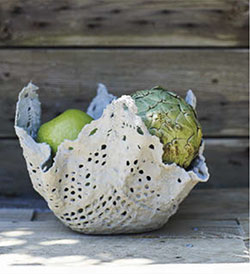

making CONCRETE POTS, BOWLS, and PLANTERS 33 stylish and simple home and garden projects HESTER VAN OVERBEEK
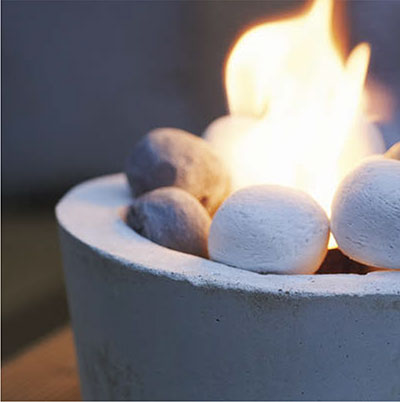

DEDICATION
For my super creative family: my aunts, uncles, and cousins, who always have some DIY advice and tips handy. This edition published in 2022 by CICO Books An imprint of Ryland Peters & Small Ltd 2021 Jockeys Fields London WC1R 4BW 341 E 116th St New York, NY 10029 www.rylandpeters.com First published in 2017 as
Making Concrete Pots, Bowls, and Platters 10 9 8 7 6 5 4 3 2 1 Text Hester van Overbeek 2017 Design and photography CICO Books 2017 The authors moral rights have been asserted. All rights reserved. No part of this publication may be reproduced, stored in a retrieval system, or transmitted in any form or by any means, electronic, mechanical, photocopying, or otherwise, without the prior permission of the publisher. A CIP catalog record for this book is available from the Library of Congress and the British Library. ISBN: 978 1 80065 112 8 eISBN: 978 1 80065 148 7 Printed in China
Editor: Gillian Haslam
Designer: Elizabeth Healey
Photographer: James Gardiner
Stylist and step photographer: Hester van Overbeek
In-house editor: Anna Galkina
Production manager: Gordana Simakovic
Publishing manager: Penny Craig
Art director: Sally Powell
Publisher: Cindy Richards
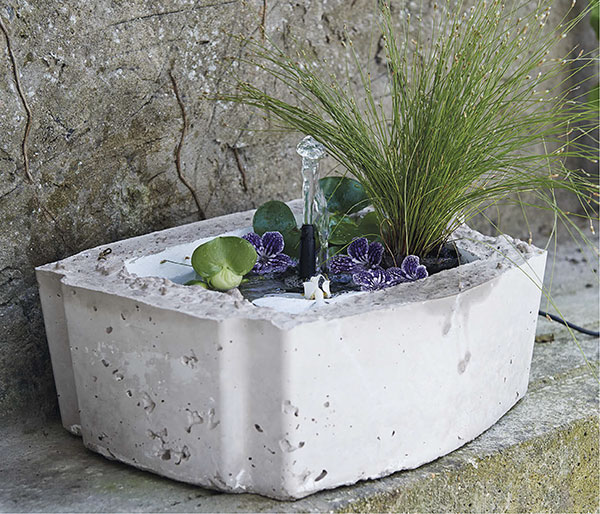
CONTENTS

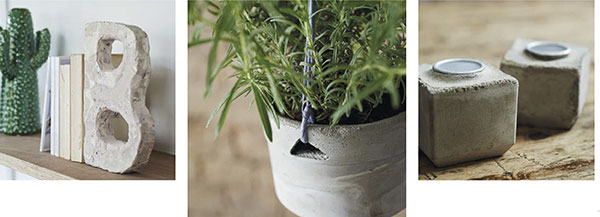

I love texturesold wood, chipped paint, marble, and concrete are all things I like to work with, so when the opportunity to create this book came along, it got my interest right away. Concrete is such a lovely medium to work with, but it can have a very industrial image and even my dad said Are you surea whole book of concrete? Isnt that way too difficult for you? To be fair, you do need to get to grips with a few basic techniques, but mixing and casting concrete is not difficult for the average crafter to master.
If you are a novice, I suggest starting with the small projects firstthe asymmetric succulent planter on . I use a variety of molds for the projects in this book. Ive built my own wooden ones, used my silicon baking pans, raided the recycling bin for juice cartons and yogurt pots, and even tried some free casting on sand. Concrete will take any shape you pour it in and will even pick up all the texture inside your molds, so you can get very creative. Most concrete crafts have a strong industrial look, so I also wanted to create some more delicate and unusual pieces, like my doily bowls on . Learning how to work with concrete was new to me and I had some disasters along the way bowls stuck in their molds and mixtures that took forever to setwhile running out of concrete mid mega pour and having to dash to the DIY store on a super busy Saturday wasnt one of my highlights! But practice paid off and by tweaking my designs and working out which molds work best, I had a lot of fun and Im pleased to share my tips and ideas with you here.
Im not the most patient crafter, and also have a relaxed approach when it comes to making things, but as curing concrete is a chemical process you do have to be quite precise and learn to play the waiting game as you wont know if your cast has worked until a day or so after you made it. However, I had so much fun coming up with some unique projects for you to make and I hope you will become a concrete convert too! 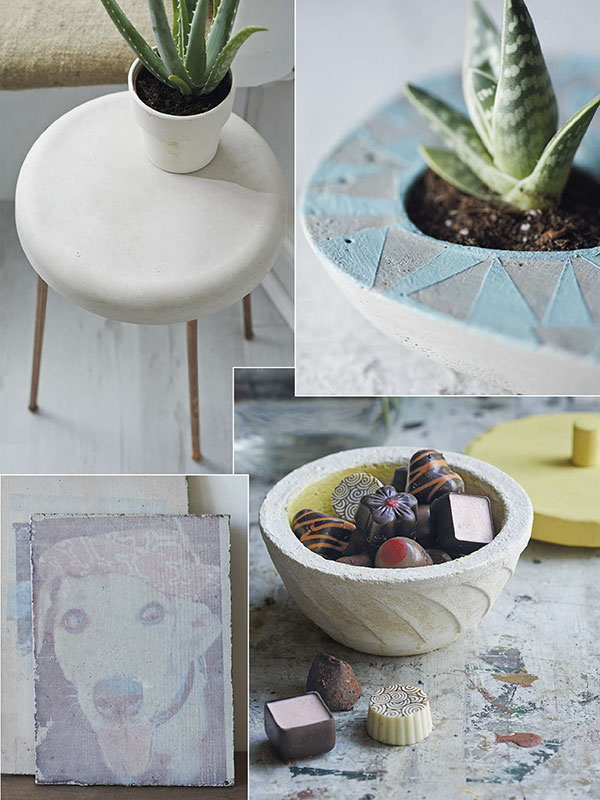
 CHOOSING YOUR CONCRETE Concrete is a super strong building material, but it is also great for crafts. It is a mix of cement and aggregates, to which you add water to create the exothermic chemical reaction which makes concrete set rock hard. People seem to mix up the words cement and concrete. To clear it up, cement is the glue that holds concrete together. You mix cement with aggregatessuch as sharp sand (also called builders sand), ballast, small rocks, gravel, etc to make concrete.
CHOOSING YOUR CONCRETE Concrete is a super strong building material, but it is also great for crafts. It is a mix of cement and aggregates, to which you add water to create the exothermic chemical reaction which makes concrete set rock hard. People seem to mix up the words cement and concrete. To clear it up, cement is the glue that holds concrete together. You mix cement with aggregatessuch as sharp sand (also called builders sand), ballast, small rocks, gravel, etc to make concrete.
To make life easy, you can buy packets of premixed concrete, in quick or normal set. Or you can mix your own by combining cement with sand and ballast. On average you mix one part cement with four parts sand/ballast/ aggregates, but always follow the instructions on your cement packaging. I tend to use premixed concrete as its relatively hassle-free and you only have to add water, but mixing your own is handy if you want a lighter colored concrete. Most premixed concrete is a gray color, but by using white Portland cement (crushed and finely ground limestone) and colored pigments you can create a lot of different toned projects (see ). Quick-set concrete is also available in premixed packets.
This mix will set within an hourgreat if you want to make something quickly. Quick-set concrete is perfect for small projects, but I wouldnt recommend it for the large planters as you will not have enough time to mix all the concrete and pour it before the first lot hardens. Concrete comes in different textures. There are the very smooth and fine ones and the coarser mixes. The coarse ones are cheaper to buy and contain larger pieces of rubble or stonesthis concrete is used by builders to make walls, etc. Smoother concrete mixes have finer milled ballast, resulting in a very smooth finish which is great for delicate projects.
All brands are different and its best to try several to see which finish you prefer. 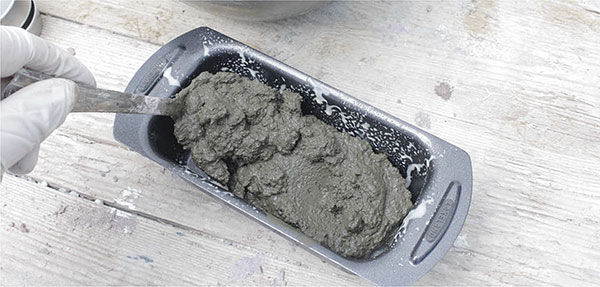 SAFETY FIRST
SAFETY FIRST 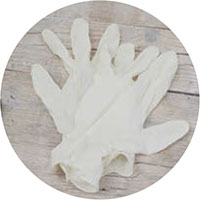 Always wear rubber gloves when you work with concrete as the mixture will make your hands super dry. You may even get skin irritations or chemical burns, so wash off any concrete that gets on your skin.
Always wear rubber gloves when you work with concrete as the mixture will make your hands super dry. You may even get skin irritations or chemical burns, so wash off any concrete that gets on your skin. 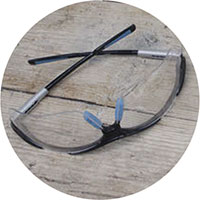 Protect your eyes from concrete dust by wearing safety goggles. Its unlikely that powder will get in your eyes when weighing and mixing the concrete, but it could splash up when you pour it into the mold or you might rub it onto your face.
Protect your eyes from concrete dust by wearing safety goggles. Its unlikely that powder will get in your eyes when weighing and mixing the concrete, but it could splash up when you pour it into the mold or you might rub it onto your face. 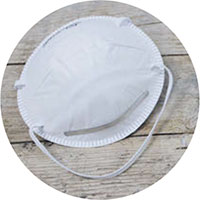

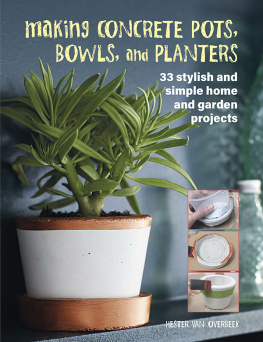
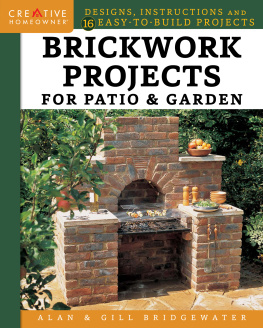


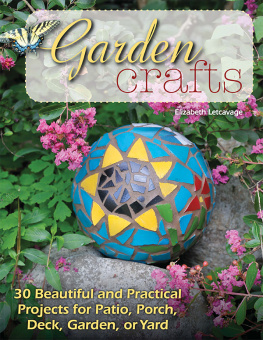
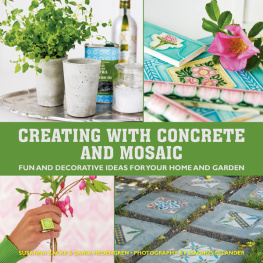
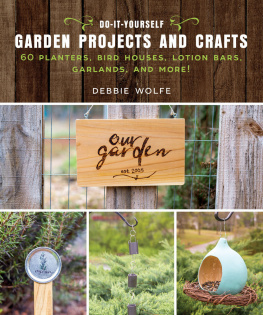
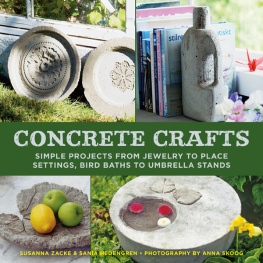
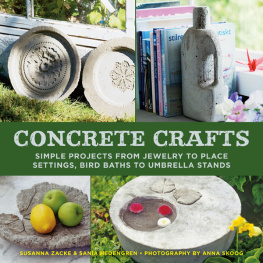



 making CONCRETE POTS, BOWLS, and PLANTERS 33 stylish and simple home and garden projects HESTER VAN OVERBEEK
making CONCRETE POTS, BOWLS, and PLANTERS 33 stylish and simple home and garden projects HESTER VAN OVERBEEK 
 DEDICATION For my super creative family: my aunts, uncles, and cousins, who always have some DIY advice and tips handy. This edition published in 2022 by CICO Books An imprint of Ryland Peters & Small Ltd 2021 Jockeys Fields London WC1R 4BW 341 E 116th St New York, NY 10029 www.rylandpeters.com First published in 2017 as Making Concrete Pots, Bowls, and Platters 10 9 8 7 6 5 4 3 2 1 Text Hester van Overbeek 2017 Design and photography CICO Books 2017 The authors moral rights have been asserted. All rights reserved. No part of this publication may be reproduced, stored in a retrieval system, or transmitted in any form or by any means, electronic, mechanical, photocopying, or otherwise, without the prior permission of the publisher. A CIP catalog record for this book is available from the Library of Congress and the British Library. ISBN: 978 1 80065 112 8 eISBN: 978 1 80065 148 7 Printed in China Editor: Gillian Haslam Designer: Elizabeth Healey Photographer: James Gardiner Stylist and step photographer: Hester van Overbeek In-house editor: Anna Galkina Production manager: Gordana Simakovic Publishing manager: Penny Craig Art director: Sally Powell Publisher: Cindy Richards
DEDICATION For my super creative family: my aunts, uncles, and cousins, who always have some DIY advice and tips handy. This edition published in 2022 by CICO Books An imprint of Ryland Peters & Small Ltd 2021 Jockeys Fields London WC1R 4BW 341 E 116th St New York, NY 10029 www.rylandpeters.com First published in 2017 as Making Concrete Pots, Bowls, and Platters 10 9 8 7 6 5 4 3 2 1 Text Hester van Overbeek 2017 Design and photography CICO Books 2017 The authors moral rights have been asserted. All rights reserved. No part of this publication may be reproduced, stored in a retrieval system, or transmitted in any form or by any means, electronic, mechanical, photocopying, or otherwise, without the prior permission of the publisher. A CIP catalog record for this book is available from the Library of Congress and the British Library. ISBN: 978 1 80065 112 8 eISBN: 978 1 80065 148 7 Printed in China Editor: Gillian Haslam Designer: Elizabeth Healey Photographer: James Gardiner Stylist and step photographer: Hester van Overbeek In-house editor: Anna Galkina Production manager: Gordana Simakovic Publishing manager: Penny Craig Art director: Sally Powell Publisher: Cindy Richards  CONTENTS
CONTENTS 

 I love texturesold wood, chipped paint, marble, and concrete are all things I like to work with, so when the opportunity to create this book came along, it got my interest right away. Concrete is such a lovely medium to work with, but it can have a very industrial image and even my dad said Are you surea whole book of concrete? Isnt that way too difficult for you? To be fair, you do need to get to grips with a few basic techniques, but mixing and casting concrete is not difficult for the average crafter to master.
I love texturesold wood, chipped paint, marble, and concrete are all things I like to work with, so when the opportunity to create this book came along, it got my interest right away. Concrete is such a lovely medium to work with, but it can have a very industrial image and even my dad said Are you surea whole book of concrete? Isnt that way too difficult for you? To be fair, you do need to get to grips with a few basic techniques, but mixing and casting concrete is not difficult for the average crafter to master. 
 SAFETY FIRST
SAFETY FIRST  Always wear rubber gloves when you work with concrete as the mixture will make your hands super dry. You may even get skin irritations or chemical burns, so wash off any concrete that gets on your skin.
Always wear rubber gloves when you work with concrete as the mixture will make your hands super dry. You may even get skin irritations or chemical burns, so wash off any concrete that gets on your skin.  Protect your eyes from concrete dust by wearing safety goggles. Its unlikely that powder will get in your eyes when weighing and mixing the concrete, but it could splash up when you pour it into the mold or you might rub it onto your face.
Protect your eyes from concrete dust by wearing safety goggles. Its unlikely that powder will get in your eyes when weighing and mixing the concrete, but it could splash up when you pour it into the mold or you might rub it onto your face. 